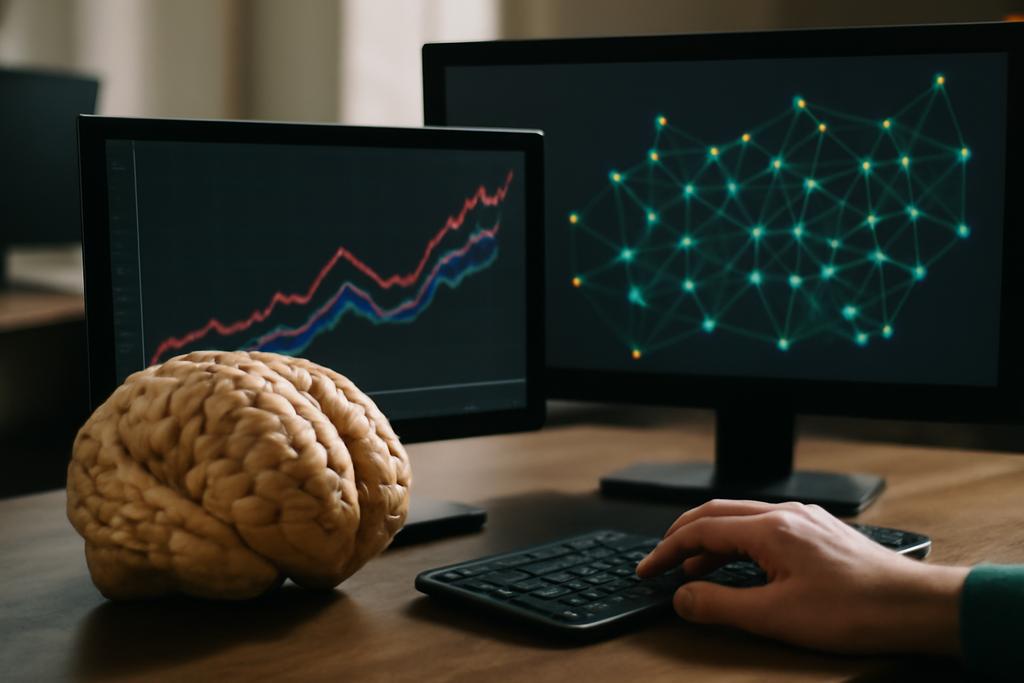Why Predicting the Future Is Harder Than It Looks
Forecasting what comes next—whether it’s traffic jams, electricity demand, or solar power output—is a puzzle that’s both urgent and complex. The challenge lies in the tangled dance of time and space: how things change over time, and how they influence each other across different locations or variables. Traditional AI models often excel at one or the other, but rarely both simultaneously with efficiency and accuracy.
Enter a new player from Fudan University in Shanghai: SpikeSTAG, a brain-inspired architecture that marries two powerful ideas in AI—spiking neural networks (SNNs) and graph neural networks (GNNs)—to tackle multivariate time-series forecasting with a fresh twist.
Spikes and Graphs: A Match Made in Neural Heaven
Spiking neural networks mimic the way biological neurons communicate: through discrete electrical pulses or “spikes.” Unlike conventional neural networks that process data in continuous values, SNNs operate in a sparse, event-driven manner, making them naturally suited to temporal data and energy-efficient computation. However, their spatial reasoning—understanding how different variables or nodes relate to each other—has lagged behind.
Graph neural networks, on the other hand, are experts at capturing spatial relationships. They model data as nodes connected by edges, perfect for representing networks like traffic systems or power grids. But GNNs often struggle to capture the fine-grained temporal dynamics that SNNs handle so well.
SpikeSTAG is the first architecture to seamlessly integrate these two worlds. It learns the spatial structure adaptively—without needing a predefined map—while processing temporal sequences through spiking neurons. This collaboration unlocks a new level of understanding for complex, interconnected time-series data.
How SpikeSTAG Works Its Magic
The model begins by enriching raw data with temporal context—think of adding timestamps like minute-of-hour or day-of-week to each data point. Then, it constructs an adaptive graph that dynamically learns how different variables relate, sidestepping the need for manual graph design.
Next comes the Multi-Scale Spike Aggregation (MSSA) module, which cleverly prunes less important connections and aggregates information from neighbors across multiple hops. This process is done entirely with spike-based computations, avoiding energy-hungry floating-point operations.
Finally, the Dual-Path Spike Fusion (DSF) module blends two streams: a lightweight LSTM capturing smooth temporal trends, and a spiking self-attention mechanism that picks up on sudden, event-driven changes. A learnable gating function balances these two, adapting to the data’s rhythm—whether calm or chaotic.
Why This Matters Beyond the Lab
SpikeSTAG doesn’t just push the needle on accuracy—it also offers a blueprint for energy-efficient AI. By leveraging the sparse, event-driven nature of spiking neurons, it reduces theoretical energy consumption by over 50% compared to traditional transformer models, all while matching or exceeding their forecasting performance.
This efficiency is crucial for deploying AI in real-world systems where power and latency matter, such as smart grids, autonomous vehicles, or edge devices monitoring environmental conditions.
Surprising Insights and Implications
One of the most striking findings is SpikeSTAG’s robustness on long-sequence forecasting tasks. Many models falter as they try to predict further into the future, but SpikeSTAG maintains strong accuracy, thanks to its explicit spatial modeling and the fusion of continuous and event-driven temporal dynamics.
Moreover, the adaptive graph learning means the model can generalize across different domains without handcrafting the relationships between variables—a significant step toward more flexible and autonomous AI systems.
Looking Ahead: A New Paradigm for AI That Thinks Like a Brain
SpikeSTAG’s success signals a promising direction where biologically inspired computing and graph-based reasoning converge. It challenges the conventional divide between spatial and temporal modeling, showing that embracing both in a unified, energy-conscious framework can yield powerful results.
As AI continues to weave itself into the fabric of our daily lives, innovations like SpikeSTAG remind us that sometimes, the best solutions come from looking to nature’s own designs—neurons firing in sync, networks forming and reforming, and the dance of time and space unfolding in elegant harmony.
Research led by Bang Hu and colleagues at Fudan University reveals that combining spiking neural networks with graph neural networks can revolutionize how we forecast complex, interconnected systems, offering both accuracy and efficiency.










